In this guide, we’ll explore dividend paying whole life insurance—a powerful wealth-building tool offered by mutual insurance companies. These mutual companies pay life insurance dividends to policyholders, making them the best options in the whole life insurance market. We’ll cover the advantages of these policies, highlight early high cash value growth features, and review the top companies to help you understand the benefits of dividend paying whole life insurance.
Table of Contents
- Introduction to Dividend Paying Whole Life
- What is Dividend Paying Whole Life Insurance?
- About Life Insurance Dividends
- Criteria For Selecting Top Companies
- Top 10 Best Dividend Paying Whole Life Insurance Companies
- Honorable Mentions
- Whole Life Insurance Rates
- Life Insurance Dividends Chart
- Whole Life Insurance Pros and Cons
- Next Steps
- FAQs
Introduction to Dividend Paying Whole Life Insurance
💡 What is Dividend Paying Whole Life Insurance?
Definition: Dividend paying whole life insurance is permanent life insurance from mutual companies that pays annual tax-free dividends to policyholders based on company profits. These dividends can purchase additional coverage, creating compound wealth growth.
Key Benefit: Unlike stock companies that pay shareholders, mutual companies like Penn Mutual and MassMutual pay all profits to policyholders as dividends.
A properly designed dividend paying whole life insurance policy focusing on high cash value growth (a high cash value whole life insurance policy) serves as an excellent vehicle for wealth creation and legacy building.
In this comprehensive guide to the best dividend paying whole life insurance companies, we’ll explore the benefits of whole life insurance and dispel common misconceptions about this powerful financial asset and compound savings vehicle.
If you’re considering cash value life insurance for various reasons, you’ll want to know who offers the best whole life insurance before committing to a policy. Good news—we’ll provide our top 10 dividend paying whole life insurance companies below.
In the world of the best whole life insurance companies, several top-rated insurance companies have impressive histories of paying life insurance dividends and delivering solid performance even through major economic crises like the Great Depression and the 2008 Great Recession.
At Insurance and Estates, we focus on using cash value life insurance for wealth building and retirement planning. Our evaluation of the best dividend paying whole life insurance companies favors those offering maximum cash value accumulation through additional riders, such as paid-up additions and term insurance riders.
🎯 Key Takeaways – Best Dividend Paying Whole Life Insurance Companies 2025
- Top Ranked Company: Penn Mutual leads with 6% dividend rate and superior cash value growth
- Mutual vs Stock: Mutual companies like MassMutual and Lafayette Life pay dividends to policyholders, not shareholders
- Tax Advantage: Life insurance dividends are tax-free per IRS Publication 525
- Cash Access: Policy loans allow money access while cash value continues compounding
- Proven Track Record: Top 10 companies have paid dividends 100+ consecutive years through all economic downturns
- Bottom Line: Insurance and Estates recommends mutual companies over stock companies for maximum wealth building potential
Why Maximize Cash Value Growth in a Whole Life Policy?
Maximizing cash value growth in a whole life policy for wealth building allows policy owners to:
- Take loans against the cash value to purchase other assets or recapture debt from expenses, while the cash value continues to grow simultaneously through tax-advantaged accumulation
- Create a “Safe Bucket” that serves as the foundation for your wealth-building journey
- Benefit from true compound interest growth in a tax-deferred environment for maximum growth potential
Our goal with this guide is to provide insights about what to look for when shopping for whole life insurance companies, helping you obtain a superior tax-advantaged asset by highlighting those dividend-paying whole life companies that outperform others.
What is Dividend Paying Whole Life Insurance?
Whole Life Insurance as a “Safe Bucket”
Whole life insurance provides a “safe bucket” thanks to the guarantees these specially designed policies offer. When we say “safe bucket,” we mean a place to put your money without fear of capital loss due to housing or stock market crashes.
Guarantees
Whole life policies offer three key guarantees:
- Guaranteed level premium: A stable payment structure where you know exactly what you’ll pay—the same fixed premium, never more
- Guaranteed death benefit: Peace of mind that if you die prematurely, your beneficiary will receive the full guaranteed death benefit tax-free
- Guaranteed cash value growth: Year-over-year increases in your policy’s total cash value, allowing true compound interest-style growth
Participating whole life policies take these benefits further by offering annual dividend payments to policy owners.
About Whole Life Insurance Dividends
Dividend paying whole life insurance is a permanent life insurance policy where the insurance provider offers a return of premium to the policy owner in the form of a dividend.
A dividend is considered a return of premium for tax purposes. This classification benefits policyholders because it allows dividends to be tax-free. We appreciate the IRS definition because tax-free money is advantageous.
However, calling dividends merely a “return of premium” tells only part of the story. Some financial commentators misleadingly suggest you’re simply getting your money back when you receive a dividend, but this ignores a crucial aspect.
Mutual insurance companies invest premium dollars. They make money on these investments, earning returns and generating profits. These profits return to mutual policyholders as dividends. As a mutual policyholder, you participate in the company’s profits—a powerful benefit.
The whole life insurance dividend, defined as a return of premium, is tax-free and gets reinvested into your policy’s cash value, allowing you to earn compound interest every year on that dividend. Simply calling a dividend a “return of premium” misses the complete picture.
Participating Policies
Not all life insurance offers dividends. Permanent life insurance that pays dividends is exclusive to participating whole life insurance.
While dividends are NOT guaranteed, most companies offering these types of life insurance policies have paid dividends consistently for over 100 years.
This type of dividend-paying coverage is also called participating whole life insurance because the policy owner participates in the insurance company’s profits.
Key Roles in Life Insurance
With life insurance, several key roles are involved:
- The owner of the policy, the company, the insured, and the beneficiary
- The owner is often, but not always, the insured
- The policy represents a legal contract between the owner and the company
- The insurance company pays a lump sum death benefit to the beneficiary upon the death of the insured
For easier reading, we’ll refer to the owner and insured as “you” throughout this article.
Criteria Used to Determine the Top 10 Best Dividend Paying Whole Life Insurance Companies
We are not compensated by any companies mentioned in this article apart from commissions paid in the normal course of business as life insurance agents. Our team, with over 70+ years of combined life insurance experience, has personally selected these companies.
Although many companies on our list rank among the largest life insurance companies, size wasn’t a criterion for inclusion. Further, we do take customer satisfaction into account, such as J.D. Power and B.B.B. rankings, where applicable.
Criteria 1 – Mutual Company vs. Stock Company
According to Kiplinger’s Personal Finance Magazine, when seeking cash value life insurance, “a mutual company is usually your best bet.”
A mutual insurance company is preferred over a stock company because the policyholder becomes a “member” who “participates” in the insurance provider’s investment gains and risk selection expertise. This contrasts with non-participating whole life insurance from stock companies, which typically don’t pay dividends.
As a participant in a mutual life insurance company, the policyholder receives tax-free dividends on the cash value, classified as a return of premium rather than income.
This is crucial: Dividend payments to policyholders offer significant tax advantages for cash value growth because these dividends aren’t taxable income but are considered refunded overpaid premiums.
This tax-favored environment, exclusive to participating whole life insurance policies, represents a key advantage that explains our preference for mutual companies in our best whole life insurance companies list.
Another benefit of mutual life insurance companies is that excess profits don’t fund purposes that fail to benefit policyholders, such as excessive executive bonuses, which might create conflicts in stock companies.
Finally, the largest mutual life insurers typically hold an AA+ rating, while the largest public companies often rate two levels lower at AA-. From 2008 to 2014, publicly traded insurers increased life insurance assets by just 1.9% annually on average, compared to 6.6% for mutual life insurers.
Criteria 2 – Performance History
(cash value accumulation, dividend payments, loan rates)
Our top 10 best dividend paying whole life insurance companies demonstrate solid track records for paying dividends, which we consider essential for reliable expectations of guaranteed and potential high cash value growth.
Life insurance dividends significantly enhance policy performance. Your cash value remains untouched, allowing true compound growth over the long term, thanks to guaranteed interest rates and dividends.
We acknowledge that dividends are NOT guaranteed—a fact often emphasized by whole life insurance critics.
To this concern, we respond: based on historical performance, our selected whole life insurance companies have demonstrated solid track records of consistently paying dividends through various economic conditions and cycles, including both the Great Depression and Great Recession.
Many of the best whole life companies have paid consistent dividends year after year for over 100 years.
Velocity of Money
We believe in the velocity of money concept and find whole life to be an excellent “home base” for your money when not in use, with easy access for keeping it moving when opportunities arise.
Your policy money is most effectively accessed via life insurance loans. For loans to work optimally, loan interest rates must be considered.
When designing a whole life policy, the relationship between loan costs and ongoing dividend rates becomes a key focus, as the goal often involves maintaining a favorable “arbitrage” between your loan rate and the asset you purchase with your loan.
Criteria 3 – Stability
(company history, reliability)
Our top 10 best dividend paying whole life insurance companies have proven track records for stability, which we consider essential for maximizing your “safe investment bucket”.
We focus exclusively on well-established mutual whole life insurance companies with solid financial strength and top credit ratings.
We prefer A.M. Best’s ratings as our benchmark when comparing companies, though you’re welcome to check alternative rating indices (Fitch, Moody’s, or Standard & Poor’s). A.M. Best ratings range from A++ (highest) to D- (lowest).
Criteria 4 – Flexibility
Simply put, some companies offer more flexibility than others regarding premium design, paid-up additions, and structuring policies that match your goals.
For our purposes, flexibility refers to the availability of various riders, flexibility in allowing paid-up additional insurance, and other accommodations for those seeking to maximize cash value accumulation.
Ultimately, a HUGE factor is how accommodating the insurance company is in helping you maximize your policy for wealth building.
Some insurers look promising but fail our test due to rigid “rules” that prevent policyholders from utilizing their policies to their fullest potential.
We avoid such providers and focus instead on insurers that prioritize helping you, the insured, whenever possible.
Criteria 5 – Overall Suitability
(for strategic purposes, maximizing cash value growth)
This criterion represents our final assessment to select the TOP 10 best dividend paying permanent life insurance companies.
We didn’t include direct recognition versus non-direct recognition as a decisive factor for several reasons:
This distinction refers to whether policy loans will negatively impact the dividend rate paid on policy cash value. Non-direct recognition means the policy will continue to perform normally, including full dividend payments, regardless of outstanding policy loans.
While non-direct recognition companies are sometimes highly regarded compared to direct recognition companies, we’ve found that many direct recognition companies demonstrate solid performance for cash value growth.
Additionally, our review of the best cash value whole life insurance companies isn’t based strictly on cash value accumulation.
If your primary goal is to secure a permanent death benefit while building cash value without implementing a personal banking and financing strategy, or even if you want a combination approach, your specific circumstances might make a direct recognition company your best choice.
Nationwide Availability
It’s worth noting that all our top whole life insurance companies for building cash value are licensed to sell whole life insurance policies in at least 40 of the 50 states.
Best Dividend Paying Whole Life Insurance Companies
Our Top 10 Rankings
1. Penn Mutual
2. Lafayette Life
3. MassMutual
4. Foresters
5. OneAmerica
6. Guardian
7. Minnesota Life
8. New York Life
9. Mutual Trust
10. Ameritas
Note: Although the list above ranks our top picks in order, the company descriptions below are arranged alphabetically.
🏆 Insurance and Estates Expert Analysis
Our Recommendation: Based on 70+ years combined experience, Penn Mutual consistently outperforms competitors for cash value accumulation with 6% dividend rates and maximum policy flexibility.
Why We’re Different: Unlike other insurance brokerages, Insurance and Estates specializes exclusively in wealth-building whole life strategies and represents only top-rated mutual companies.
Track Record: We’ve helped thousands of clients build tax-advantaged wealth through properly designed dividend-paying whole life insurance since 2016.
THE ULTIMATE FREE DOWNLOAD
The Self Banking Blueprint
A Modern Approach To The Infinite Banking Concept

Ameritas
Ameritas was founded in 1887 and is a direct recognition life insurance company offering a solid product for wealth-building strategies focused on cash accumulation. It’s a reputable company with a stable outlook (A rating with A.M. Best).
Ameritas earned a place on our list because it’s a mutual company with a strong track record of dividends, with a 2025 rate of 5.25%, and steady growth despite its direct recognition status.
Ameritas Growth Whole Life is limited pay life insurance that allows the policy to be fully funded in 10 years. You can add a flexible paid-up rider to rapidly increase cash value growth.
For more on this top whole life insurance company, please check out our Ameritas Life review.
Foresters
Foresters Financial offers one of the only participating no medical exam whole life insurance policies in the industry. You can get up to $400,000 in 20-Pay or Paid-Up at 100 whole life insurance without an exam.
Foresters Financial boasts an A rating with A.M. Best and is an innovator in life insurance underwriting.
With a guaranteed insurability rider option, this policy deserves consideration when reviewing the best participating whole life insurance companies. In 2025, Penn Mutual announced a 6% dividend rate.
For more on this top whole life insurance company, please visit our Foresters Financial review.
Guardian
The Guardian is an extremely solid company (A++ superior rating from A.M. Best) that, despite being a direct recognition insurer, is committed to treating whole life insurance as an asset.
Guardian promotes a cash value growth strategy among its agents, and their direct recognition status hasn’t significantly affected policy performance.
For cash value accumulation, Guardian’s 10-pay limited pay life insurance product stands out as their strongest offering when properly structured (blended with paid-up additions).
We recommend watching their career agents closely if you work with them, as some tend to prefer the much less advantageous Guardian L-99 product.
Guardian also earns high marks for excellent customer service and flexibility by offering numerous premium payment options.
For 2025, Guardian announced a $1.6 billion dividend payment with a dividend interest rate of 6.1%.
For more on this top dividend paying whole life insurance company, please check out our Guardian Life review.
Lafayette Life
Lafayette Life is a non-direct recognition company that has captured a significant segment of whole life insurance purists. This company’s popularity stems from its non-direct recognition status, sound business rating (A+ A.M. Best rating), and solid performance track record.
While this company doesn’t stand out as dramatically as some others on our list, it consistently delivers quality performance.
Lafayette Life’s dividend rate for 2025 was 5.75% on a total dividend payout exceeding $123 million.
For more on this top whole life insurance company, please visit our Lafayette Life review.
MassMutual
MassMutual stands as a behemoth in the whole life insurance market and consistently ranks among the top choices for various reasons, including cash value accumulation and wealth building.
MassMutual is a mutual company that consistently leads in the crucial category of dividend payment history. MassMutual’s whole life insurance dividend history is exceptional, with its Penn Mutual announced a 6% dividend rate. The company recently announced an estimated 2022 dividend payout of $2.5 billion.
They offer a solid model for paid-up additions, and their 10-pay product effectively maximizes cash value growth.
MassMutual earns the coveted A.M. Best rating of A++ Superior and qualifies as a suitable whole life insurance product for everything from wealth building to securing a permanent death benefit.
It’s worth noting that MassMutual’s convertible term life insurance can be converted to whole life later. If whole life insurance quotes make you hesitant to commit, consider buying a term life policy from one of the top mutual insurance companies that allows future conversion to their permanent policies.
Finally, MassMutual ranks among the best long-term care insurance companies available, offering both standalone LTCi policies and hybrid LTC insurance policies.
For more on this top whole life insurance company, check out our MassMutual review.
Minnesota Life
Minnesota Life operates as part of the Securian Financial Group, Inc., a holding company where Minnesota Life represents the largest affiliate.
The A.M. Best rating for Minnesota Life, through its parent company Securian Financial Group, Inc., is A+.
Minnesota Life offers two primary whole life policies: one focusing primarily on death benefit protection and another emphasizing cash value growth.
Minnesota Life provides participating whole life insurance with a solid dividend payout history. Their dividend rate consistently ranks near the top among the best dividend paying whole life policies available.
As of 2025, no published information has been released by the company on its dividend rate or amount.
For more on this highly ranked whole life insurance company, please check out our review of Minnesota Life Insurance Company.
Mutual Trust
Mutual Trust Life Solutions Company has operated since 1904. The company markets itself as “The Whole Life Company” and ranks among the top mutual companies providing participating life insurance.
It has paid dividends on its participating life insurance for over 100 years.
Mutual Trust maintains an A rating from A.M. Best.
Its Horizon line of whole life products includes Horizon Value, Horizon Guarantee, Horizon Blend, and Horizon Legacy.
The company offers two different paid-up additions riders, term riders, waiver of premium, and a guaranteed purchase option.
As of 2025, no published information has been released by the company on its dividend rate or amount.
For more information, please visit our Mutual Trust review.
New York Life
New York Life stands as the largest mutual company in the United States AND one of the world’s largest life insurers, demonstrating their mastery of the insurance business.
They rank number 61 on the Forbes 100 list and hold an A++ rating from A.M. Best.
The training and sales force at this company excel, with agents highly trained in the advanced (high net worth) markets. While their agents aren’t necessarily captive, they typically prioritize NY Life products.
In 2025, New York Life expected to pay participating policyholders a dividend payout of $2.5 billion, marking the 171th consecutive year the company has paid dividends to policy owners, dating back to 1854.
For more on this top whole life insurance company, please check out our review of New York Life Whole Life Insurance.
OneAmerica
OneAmerica is a solid mutual company (A+ rating with A.M. Best) offering “non-direct recognition” whole life insurance. The company provides significant flexibility with its paid-up additions rider option on their whole life policy.
OneAmerica also offers a declining paid-up additions load, allowing policyholders to reduce the amount of paid-up additions being paid. However, this flexibility can backfire if reduced paid-up additions undermine your cash value accrual strategy.
Their Indexed Dividend Crediting Option (IDO) Rider allows Legacy and Legacy 121 policyholders to participate in market movements, potentially earning up to double their dividend without sacrificing whole life guarantees.
OneAmerica planned to pay over $36.4 million in dividend payments for 2025.
For more on this top whole life insurance company, please check out our OneAmerica review.
Penn Mutual
Penn Mutual is another solid mutual company (A+ by A.M. Best) earning high marks in multiple areas while ranking as one of our top picks for early high cash value accumulation.
Although a direct recognition company, Penn Mutual’s whole life policy illustrations and performance track record for cash accumulation are exceptional.
They also score among the highest on our list for flexibility in paid-up additions payment options.
Penn Mutual offers an advantageous waiver of monthly deductions rider for ages 0-55, which activates after a 4-month waiting period if you suffer a long-term disability. If you become disabled before age 60, the waiver ensures your policy premiums are covered.
An interesting aspect of this company is that their sales data reveals a large following of independent brokers compared to some other choices that operate primarily through captive sales forces.
Another benefit of Penn Mutual is that most newly issued permanent policies include a living benefit chronic illness rider, allowing your death benefit to be accelerated to help cover long-term care expenses.
For 2025, Penn Mutual announced a 6% dividend rate and a record $265 million total payout.
For more on this top dividend paying whole life insurance company, please check out our Penn Mutual review.
THE ULTIMATE FREE DOWNLOAD
The Self Banking Blueprint
A Modern Approach To The Infinite Banking Concept

Honorable Mentions
Northwestern Mutual
Northwestern Mutual currently reigns as the highest-rated life insurance company in the U.S. (A++ superior by A.M. Best) and demonstrates extraordinary commitment to maintaining financial strength.
This commitment extends to their whole life products, best described as dependable rather than flashy, with a solid track record of gains and dividend payments. Like Guardian, they prioritize excellent customer service.
In 2025, the company announced a $8.2 billion dividend payment with a 5% interest payment.
For us, Northwestern Mutual presents a challenge because the company only allows captive agents to write policies.
For more on this highest-rated whole life insurance company, please check out our review of Northwestern Mutual Life Insurance.
MetLife
MetLife operates as a “de-mutualized” stock company, making it an outlier as our only stock company among the mutuals.
Its life insurance subsidiaries hold an A+ rating with A.M. Best. We include MetLife among dividend paying whole life insurance options despite its non-mutual status for several reasons.
First, despite de-mutualizing, they’ve demonstrated strong commitment to competing in the dividend paying whole life market. Years ago, they introduced several Promise Whole Life products apparently aiming to beat Northwestern Mutual on price.
Around 2013, MetLife introduced products focused on cash performance and shortened payment terms. These products appear to be solid performers for income generation.
Their products, such as paid-up at 65 and 10-pay options are reliable, though perhaps less flexible in design features than some of our TOP 10 choices.
In 2017, MetLife’s dividend rate on its Promise Whole Life was 4.70%, down from 5% in 2016.
Ohio National
Update: As of March 2021, Ohio National announced plans to demutualize the company. As a result, we no longer recommend Ohio National as a top company.
Ohio National was a solid mutual company (A+ by A.M. Best) consistently recognized as a strong contender for cash accumulation policies.
Although a non-direct recognition company, in recent years they’ve been outperformed by some of our other choices for several reasons. They appear to lack some flexibility for paid-up additions, though they may claim otherwise.
Another apparent issue is that, similar to Guardian, many agents promote certain whole life products that may not optimize cash accumulation as effectively as some of their other products.
We recommend thorough research when considering their offerings to identify the best product for your goals.
In 2021, Ohio National planned to pay around $100 million in dividends with a 4.7% dividend rate.
For more on this whole life insurance company, please visit our Ohio National review.
Dividend Paying Whole Life Insurance Rates
Inevitably, the question of how much whole life insurance costs arises. Our focus on these top whole life insurance companies emphasizes cash accumulation features more than death benefits.
We target high cash surrender values early on so you can utilize your policy’s cash value for other financial endeavors. As a result, the best whole life insurance rates aren’t achieved when comparing a cash value focused policy vs. a death benefit focused policy.
If you want affordable whole life insurance premiums, we can help. Just understand that lower whole life insurance premiums or policies designed with a death benefit focus typically result in slower cash value accumulation growth in the early years.
If you’re concerned about having a large death benefit but worried about the high price tag, you can always supplement your coverage with a term life rider. This approach lets you secure a valuable cash value whole life policy while allowing the cash value to “catch up” with the death benefit over time.
For more accurate numbers tailored to your situation, you can request a whole life insurance illustration. Simply give us a call for your personalized whole life illustration.
Life Insurance Dividends Chart
Our whole life dividend chart information comes from public sources we consider reliable. However, we do not guarantee the accuracy of this information.
| Company | 2014 | 2015 | 2016 | 2017 | 2018 | 2019 | 2020 | 2021 | 2022 | 2023 | 2024 | 2025 | Avg |
|---|---|---|---|---|---|---|---|---|---|---|---|---|---|
| MassMutual | 7.1 | 7.1 | 7.1 | 6.7 | 6.4 | 6.4 | 6.2 | 6 | 6 | 6 | 6.1 | 6.4 | 6.4 |
| Penn Mutual | 6.34 | 6.34 | 6.34 | 6.34 | 6.34 | 6.1 | 6.1 | 5.75 | 5.75 | 5.75 | 6 | 6.12 | 6 |
| New York Life | 6 | 6.2 | 6.2 | 6.3 | 6.1 | 6 | 6.1 | 5.8 | 5.8 | 5.8 | 6.03 | ||
| Ohio National | 6 | 6 | 6 | 5.75 | 5.4 | 5.4 | 5.2 | 4.7 | N/A | N/A | N/A | N/A | 5.66* |
| Guardian Life | 6.25 | 6.05 | 6.05 | 5.85 | 5.85 | 5.85 | 5.65 | 5.65 | 5.65 | 5.75 | 5.9 | 6.1 | 5.86 |
| Northwestern Mutual | 5.6 | 5.6 | 5.45 | 5 | 4.9 | 5 | 5 | 5 | 5 | 5 | 5.5 | 5.16 | |
| Lafayette Life | 5.2 | 5.2 | 5.2 | 5.2 | 5.2 | 5.2 | 5.2 | 5.2 | 5.2 | 5.2 | 5.3 | 5.75 | 5.2 |
| Foresters Financial | 6.42 | 6.65 | 6.83 | 6.58 | 6.23 | 6 | 5.8 | 5.25 | 5.8 | N/A | 5.9 | 6.17** | |
| MetLife / Brighthouse | 5.25 | 5.1 | 5 | 4.7 | 4.7 | 4.7 | 4.7 | N/A | N/A | N/A | 4.86*** | ||
| Ameritas | 5.25 | 5.25 | 5.15 | 5 | 5 | 5 | 5 | 4.75 | 4.6 | 4.6 | 4.96 | ||
| Minnesota Life | 5 | 5.25 | 5 | 5 | 5 | 4.83 | 4.63 | ||||||
| National Life Group | 5.75 | 5.75 | 5.75 | 5.75 | 5.25 | 5.25 | 4.5 | 4.25 | 5 |
**Foresters rates through dividend payment to policyholders of record in 2022
***MetLife / Brighthouse through 2020
| Company | 2014 | 2015 | 2016 | 2017 | 2018 | 2019 | 2020 | 2021 | 2022 | 2023 | 2024 | 2025 |
|---|---|---|---|---|---|---|---|---|---|---|---|---|
| MassMutual | 1.49B | 1.7B | 1.7B | 1.6B | 1.6B | 1.72B | 1.7B | 1.7B | 1.85B | 1.9B | 2.2B | 2.5B |
| Penn Mutual | 33.2M | 41.2M | 48M | 58M | 70M | 87M | 100M | 105M | 123M | 163M | 200M | 265M |
| New York Life | 1.37B | 1.56B | 1.7B | 1.8B | 1.78B | 1.8B | 1.9B | 1.8B | 1.9B | 2.0B | 2.2B | 2.5B |
| Ohio National | 59.1M | 68.1M | 80.6M | 75M | 90M | 100M | 100M | 100M | N/A | N/A | N/A | N/A |
| Guardian | 776M | 784M | 850M | 847M | 911M | 978M | 982M | 1.05B | 1.13B | 1.26B | 1.398B | 1.6B |
| Northwestern Mutual | 5.2B | 5.5B | 5.6B | 5.2B | 5.3B | 5.3B | 6B | 6.2B | 6.5B | 6.8B | 7.3B | 8.2B |
| Lafayette Life | Unknown | Unknown | Unknown | Unknown | Unknown | Unknown | 67.3M | 68M | 70.9M | Unknown | 103M | 123.3M |
| Foresters Financial | Unknown | Unknown | Unknown | 23.7M | 24.3M | Unknown | 24.4M | 24M | Unknown | Unknown | Unknown | Unknown |
| National Life Group | Unknown | Unknown | Unknown | 67M | Unknown | Unknown | Unknown | Unknown | Unknown | 26.5M | 25.5M | $25M |
Whole Life Insurance Pros and Cons
For a detailed analysis, check out our article covering whole life insurance pros and cons. Here’s a brief summary:
Best Whole Life Insurance Pros
- Guaranteed Death Benefit
- Guaranteed Cash Value Growth
- Guaranteed Fixed Premium
- Dividend Payments
- Paid-Up Additions
- Increased Long-Term Care Benefits
- Tax-Advantaged Asset
- Non-Correlated Asset
Best Whole Life Insurance Cons
- Initially More Expensive than Term Life
- Proper Design is Essential
Conclusion
And there you have it—our Top 10 best dividend paying whole life insurance companies with reviews.
Many companies listed above offer fantastic “safe buckets” from which to build your financial foundation. Having a stable environment, protected from stock market volatility, helps you control emotions and make logical financial decisions.
During the next major market downturn, you might choose to take a policy loan from your stable cash value policy to invest in depressed assets like dividend-producing stocks or cash-flowing real estate. Or you might use it as an alternative income source to protect against sequence of returns risk in retirement.
The key point: dividend paying whole life insurance provides a stable financial foundation for making sound financial decisions. The value of such stability is immeasurable.
💡 Bottom Line
Best Overall: Penn Mutual leads with 6% dividends and maximum flexibility. Most Established: New York Life (171 consecutive years of dividends). Largest Payouts: MassMutual ($2.5 billion annually). For personalized recommendations, contact Insurance and Estates.
Next Steps
We hope this guide has informed your search for the right participating whole life policy. For more insights about our recommendations or feedback on any whole life insurance concern, please leave a comment below.
Additionally, check out our resources page for e-books, webinars, and additional learning materials.
Find the Best Dividend Paying Whole Life Insurance for You
Ready to explore dividend paying whole life insurance as a wealth-building tool? Our expert team at Insurance and Estates will guide you through selecting a top mutual insurance company tailored to your financial goals.
- ✓ Get a personalized comparison of the top 10 dividend paying whole life insurance companies
- ✓ Learn how to maximize cash value growth with paid-up additions and riders
- ✓ Understand the tax advantages and guarantees of participating whole life policies
- ✓ Receive a custom whole life illustration based on your needs
Schedule your free 30-minute consultation today and start building your financial foundation with confidence.
No obligation. No pressure. Just expert advice to help you choose the right whole life policy for wealth creation and legacy planning.

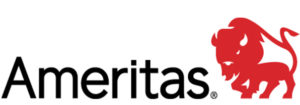
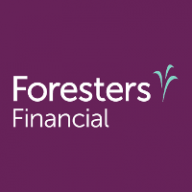
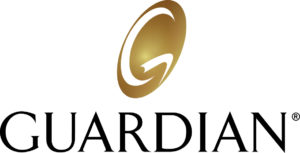

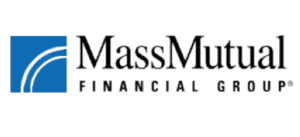
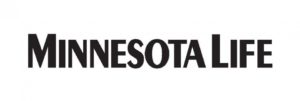

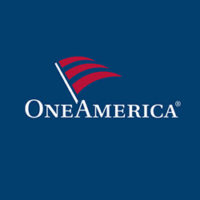
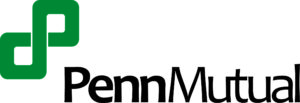

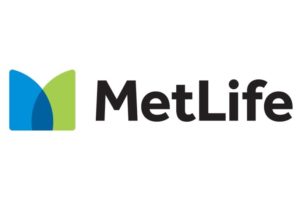

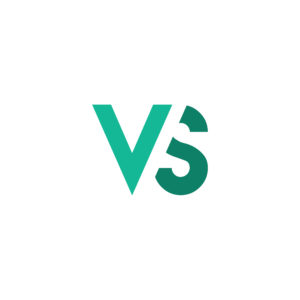



54 comments
Erika Waldo
I am with New York life and I am not a captive agent, I am independent. So that’s not 100% true that everyone is captive at NYL
Insurance&Estates
Thank you for your feedback. And yes, you are correct, you can write NY Life and not be captive and NY Life agents can write other products besides NY Life.
Steven Johnson
What about State Farm Mutual Life? My policy consistently pays a nice dividend. I recently read literature that State Farm paid $903 Mil in dividends last year.
Insurance&Estates
Hi Steven,
Thank you for the comment. State Farm is a great mutual insurance company and we have nothing negative to say about it. Two things we would point out though are that State Farm is a captive agent company, meaning only State Farm agents can offer State Farm whole life insurance. And the second thing we would mention is that State Farm is not known as one of the top dividend paying whole life insurance companies in terms of the dividend rate paid to policyowners.
All the Best,
Steve Gibbs for I&E
Steven Gibbs is a licensed insurance agent, and the following agent
license numbers of Steven Gibbs are provided as required by state law:
Resident License; AZ agent #17508301,
Non-resident Licenses: TX agent #2273189, CA agent #0K10610,
LA agent #769583, MA agent #2049963, MN agent #40563357,
UT agent #655544.
carl kielbasa
I own 3 policies, purchased 10 years ago, from Mutual Trust. They were sold to Pan American Life and recently I received notification that they are De-Mutualizing. I cannot get any information from their customer service folks on how this will affect current contracts moving forward; will a dividend be paid annually? My suspicion is that it won’t. However, I am wondering if you had any insight on this? Thank you!
Steven Gibbs
Hello Carl,
It is true that companies can de-mutualize and I think you’re asking a very valid question. However, it would be more appropriate to have a policy review with one of our whole life experts. If you’re interested in this, I suggest that you connect with Barry by explaining your concerns and requesting a call at barry@insuranceandestates.com.
Best,
Steve Gibbs for I&E
Steven Gibbs is a licensed insurance agent, and the following agent
license numbers of Steven Gibbs are provided as required by state law:
Resident License; AZ agent #17508301,
Non-resident Licenses: TX agent #2273189, CA agent #0K10610,
LA agent #769583, MA agent #2049963, MN agent #40563357,
UT agent #655544.
Jeremy
Awfully biases saying Northwestern Mutual is only an honorable mention because of their exclusive distribution. NM pays more in dividends than every other carrier. Just because you aren’t able to offer their policies does not make them inferior… it simply means you have your own biases.
Alison
Totally agree Jeremy. No one came close to payout to the consumers then NWM
6.8 B in 2023 they announced!
Steven Gibbs
Thanks for commenting. One thing to consider is the gross amount of dividends paid can be misleading because the large number of NW Mutual policy holders, just something to note.
Best,
Steve Gibbs for I&E
if you haven’t already connected, I recommend that you connect with our IUL expert Jason Herring by emailing him at jason@insuranceandestates.com. Jason works regularly with Mutual of Omaha as well.
Best, Steve Gibbs for I&E
Steven Gibbs is a licensed insurance agent, and the following agent
license numbers of Steven Gibbs are provided as required by state law:
Resident License; AZ agent #17508301,
Non-resident Licenses: TX agent #2273189, CA agent #0K10610,
LA agent #769583, MA agent #2049963, MN agent #40563357,
UT agent #655544.
Jack
If you are going to have a fair and non-biased article on this, you as an agent should disclose that DIR can be illustrated without accounting for expenses and mortality. Mass, Penn, and every other company on the list (which you can sell), shows a gross DIR. NM factors in Mortality and expenses before reporting. If you look up any report on actual cash value growth over 20, 30 or 40 years, NM will outperform every time. Objective math, which deserves more than a “mention”.
Steven Gibbs
Hello Jack, thanks for your comment and I have to say that we get at least one passionate response concerning NW Mutual a month. I’m very familiar with NW mutual as my uncle was a top producer there and I had quite a few discussions with him in my youth. In response to your comment, in the battle for dollars, these passionate responses aren’t surprising, especially given NW Mutual’s culture. To be sure, NW Mutual is an outstanding company with a huge track record in the high cash value whole life arena and I respect the history and commitment of the company greatly. With this in mind, your contention is, however, very hard to swallow for a few reasons. First, this isn’t the first time someone has suggested that NW Mutual’s approach to reporting of dividends somehow is a game changer. The last one I heard was concerning NW Mutuals large gross dividend numbers, attempting to make the case that because NW Mutual pays more dividends to policy holders and this equates to policy growth, etc. This contention failed to consider the number of policy holders with NW mutual policies vs smaller mutuals – gross numbers do not tell the entire tale.
What you’re now saying, as far as I understand it, is that NW Mutual is the ONLY mutual company that factors in mortality and costs when illustrating dividends. My first natural question, is how do you know that other mutuals are NOT accounting for mortality and costs in illustrating dividend rates AND, a related question, assuming your contention about NW mutual’s approach is true, are they doing this differently simply due to higher ethical standards, even to the extent of hindering their competitive advantage concerning other mutual WL competitors? My guess is that you may not be able to answer this question; however, I would be interested to hear your feedback in precise detail as to why NW mutual does this differently and also exactly how you’ve determined that NO other mutual WL competitor factors in costs or mortality in illustrating dividends?
Another factor that I think is important is that NW Mutual’s cost is arguably higher than most other mutual WL companies due to the company’s massive budget. Mass Mutual would also be in this camp. My observation is that other top WL mutuals are often leaner and meaner and my belief is that some of this equates to your observation of costs. In summary, I applaud you advocating for high cash value mutual whole life in general as we both would agree it is a powerful asset. And, to reiterate, NW mutual, as we always say, is a top tier company. I’m responding in detail just to encourage more dialogue and draw out any nuggets of truth. I do personally try to avoid grandiose sales hype and, in a world of highly polarized opinions, try to stay with facts only. Thanks again for commenting and I will welcome any further factual feedback.
Best, Steve Gibbs for I&E
Steven Gibbs is a licensed insurance agent, and the following agent
license numbers of Steven Gibbs are provided as required by state law:
Resident License; AZ agent #17508301,
Non-resident Licenses: TX agent #2273189, CA agent #0K10610,
LA agent #769583, MA agent #2049963, MN agent #40563357,
UT agent #655544.
Insurance&Estates
Being an honorable mention does not mean NW Mutual is inferior. They are a good company and if you have a policy or are a NW Mutual agent, good for you. They certainly are a highly rated life insurance company. And the company may pay out a larger dividend in terms of dollars but the dividend rate is lower than other mutual insurance companies.
Best, Steve Gibbs
Steven Gibbs is a licensed insurance agent, and the following agent
license numbers of Steven Gibbs are provided as required by state law:
Resident License; AZ agent #17508301,
Non-resident Licenses: TX agent #2273189, CA agent #0K10610,
LA agent #769583, MA agent #2049963, MN agent #40563357,
UT agent #655544.
Edwin Manzano
Hello, I’m Edwin, 30 years old and I’m a felon, not sure if that plays a part when it comes to the underwriting of insurance but pretty much I went to prison for armed robbery. I’m working a min. wage job right now. Would you be able to help? Thanks!
SJG
Hello Edwin, we have a sister website actually with an article addressing your situation: ARTICLE LINKED HERE
You can then request a quote on that site if you would like to talk with an agent.
Best, Steve Gibbs for I&E
Steven Gibbs is a licensed insurance agent, and the following agent
license numbers of Steven Gibbs are provided as required by state law:
Resident License; AZ agent #17508301,
Non-resident Licenses: TX agent #2273189, CA agent #0K10610,
LA agent #769583, MA agent #2049963, MN agent #40563357,
UT agent #655544.
Kyle Cowart
Do you have agents in Arkansas? I have been reading up on the Bank On Yourself approach. Sounds very appealing.
SJG
Hi Kyle, our IBC experts are licensed in all 50 states. If you’re interested in scheduling a conversation, go ahead and email Denise Boisvert at denise@insuranceandestates.com.
Best, Steve Gibbs for I&E
Steven Gibbs is a licensed insurance agent, and the following agent
license numbers of Steven Gibbs are provided as required by state law:
Resident License; AZ agent #17508301,
Non-resident Licenses: TX agent #2273189, CA agent #0K10610,
LA agent #769583, MA agent #2049963, MN agent #40563357,
UT agent #655544.
stuart dunn
Wow i wished i had been taught this at school
my question is Are these policies only for the USA or can i obtain these in the UK
I’m getting on a bit now but i am interested in the whole life compound interest account
Regards
Stu Dunn
SJG
Hello Stuart and thanks for reaching out. A good next step is to reach out to our IBC expert Denise to request a call at denise@insuranceandestates.com.
Best, Steve Gibbs
Resident License; AZ agent #17508301,
Non-resident Licenses: TX agent #2273189, CA agent #0K10610,
LA agent #769583, MA agent #2049963, MN agent #40563357,
UT agent #655544.
Thomas Crosby
What to offer an whole life with divided to my agents
708 597 8731 x 108
SJG
Hi Thomas, thanks for connecting. The best way to get more concrete feedback is to schedule a zoom call with Barry Brooksby who offers agent training, etc. You can email him at barry@insuranceandestates.com.
Best, Steve Gibbs for I&E
Jason F
Hello, 22 year old here looking towards finding a whole life insurance to treat as an asset to start building my financial portfolio. I am interested in using the insurance as a means of obtaining properties that I can rent out eventually. Is whole life insurance the best option for this, or would something like term life insurance be better? Also should I wait until I get a bit older for this or is the earlier the better?
Insurance&Estates
Hello Jason, thanks for connecting. Term life would offer you no benefits for your stated goal as it does not accrue cash value. You’re on the right track with mutual dividend paying whole life that is properly designed.
To learn more, connect with Denise Boisvert at denise@insuranceandestates.com to request a call.
Best, Steve Gibbs for I&E
Heather strong
Interesting stuff here, I’m 30 years old 2 kids does bad credit affect having life insurance? I started a long term job that will pay well after a bit of time a safety net is a life goal for me during and after if life, Any tips ? Currently in Washington.
Insurance&Estates
Hello Heather, thanks for checking in! Your ideal next step is to chat with our high cash value expert Barry Brooksby, as he can give you more details about the impact of credit and income, etc., though credit alone shouldn’t dramatically impact your obtaining life insurance. You can email him to request a call at barry@insuranceandestates.com.
Best, Steve Gibbs for I&E
Mike Ramsey
Please recommend a DPWLI company that will write policy for 100k on an almost two year old.
Thank you.
Insurance&Estates
Hello Mike, I forwarded your request to Barry Brooksby and you are welcome to reach out to him directly also at barry@insuranceandestates.com.
Best, Steve Gibbs for I&E
André Mangabeira
Hi!
Does all of those companies accept international clients? I’m very interested in IBC and also becoming affiliate to promote this kind of structure in Brazil.
Thanks
Insurance&Estates
Hello Andre’, our IBC Pro is Barry Brooksby and I’ve forwarded your inquiry to him. You can also reach out at barry@insuranceandestates.com.
Best, Steve Gibbs for I&E
C.
Hey,
I am about to go with northwestern mutual, but it looks like in your chart of dividends that Mass Mutual did the best? So, do I walk away? I just want to be sure in the company I put my money. I did alot of research and thought northwestern is the best out there. Excuse me for my lack of knowledge, new to this and just want to find best for my money and stick there for life.
Insurance&Estates
Hello, I would encourage you to do a comparison with some other “non-captive” major companies such as Mass and/or Penn Mutual. Northwestern claims to be the best; however, there may be better choices to consider. If you’re interested in comparing, connect with Barry Brooksby at barry@insuranceandestates.com.
Best, Steve Gibbs, for I&E
Clarc King
Great information. I need more information on the benefits of direct recognition vs non-direct recognition.
Thanks,
Clarc King
Insurance&Estates
Hello Clarc, thanks for your comment. I suggest you connect with Barry Brooksby on this issue at barry@insuranceandestates.com.
Best, Steve Gibbs, for I&E
Kevin
I heard one advisor tell a client to pull money out of his cash value life insurance (10pay)to put into the stock market. If you had 400k in cash value and it grew with dividends and a dividend interest rate add in paid up additions. Does that make sense? If you don’t need the death bene fine but the cash value grows at suck a rapid rate after your pay period is over? thoughts?
Insurance&Estates
Hello Kevin, I think you answered your own question. An “advisor” told the client to do this – any conflict there perhaps (even for a fee based advisor)? Highly irresponsible advice in my humble opinion for many reasons including the huge benefit of permanent life insurance AND the tax advantages related to the cash value to name a couple.
Best, Steve Gibbs for I&E
Del
What, is the normal cost of an advisers fee for the structuring of a Personal bank financial strategy?
Thx
Dave
I’m surprised to see you analyzed dividend rates but there seems to be some companies that show a net of fees rate like say a northwestern (universally understood to pay the most dividends) but you have some that show the gross rate, misleading a reader potentially. Any thoughts on that?
Insurance&Estates
Hello Dave, thanks for pointing out that dividend rates can be misleading and thus misused. That of course is not our intent as we are not attempting to promote (sell) a company or policy to someone in our articles but rather providing general information to benefit the consumer. That said, I also think that virtually every aspect of whole life insurance has been targeted and often demonized by the financial industry (i.e. dividend rates) and even among life insurance companies the dividend issue is a hotbed for debate between companies. We will continue to strive to educate the consumer so they can make the most informed decision possible. Those are my thoughts.
Best to you.
Steve Gibbs for I & E
Fran
Am 72 yrs old, in good health, living in CA, how much premium wd buy a $500k coverage of IBC ins. payable in 15 yrs, & which is the best Ins. Co to get in? Tnx for any informative needed response.
LARRY MORTIMER
IS 76 TOO OLD TO START ON THIS WEALTH BUILDING AND DEATH BENEFIT STRATEGY.
ANY SUGGESTIONS OR IS IT TOO LATE.
LARRY
Insurance&Estates
Hello Larry, thank you for your helpful and, yes, common question. IF you’re reasonably health, it is generally never too late to build an effective wealth building and death benefit strategy with permanent life insurance. I forwarded your question to Jason Herring, our product and design expert and he will gladly discuss your concerns and options at your convenience. Please feel free to send him an e-mail message at jason@insuranceandestates.com to schedule an initial conversation.
Best, Steve Gibbs
Matthew D.
Also, shouldn’t the focus be on guaranteed and non-guaranteed growth in cash value rather than dividend rates? Thanks!
Insurance&Estates
Matthew, another solid question. My personal opinion is that dividend rates are instructive as a measure of performance as are the other measures that you noted. That said, there are many theories and opinions about dividend rates and so your question doesn’t lend itself to an easy response. Again, will run this through across our sales team and will follow up with anything definitive.
Best,
Steve
I&E
Matthew D.
What was the actual dividend paid, not what was announced, by the companies listed? I like the post. I worked for Northwestern Mutual and am a policyholder. I remember reading some literature on more than one occasion that Mass Mutual in particular typically announces a higher dividend, but rarely pays it. Do you all have any information on this, or where I could obtain it? Thanks!
Insurance&Estates
Hi Matthew, thanks for your interest and excellent questions. I will run this through our team pipeline and see what the response is.
Best to you.
Steve Gibbs
I&E
Mark Liu
Hi,
I am interested in finding a bank on yourself authorized advisor to have a free personalized solution of a dividend paying whole life policy, who can serve a client in GA.
I would appreciate it if you could help with that.
Regards,
Mark
Insurance&Estates
Hi Mark,
Please look for our reply to the contact information you provided.
Sincerely,
I&E
Burt
I’m a NY resident, probably uninsurable. I’d like to consider DPWLI for my daughter (NY resident) and daughter-in-law (CA resident). Please advise which of your 10 recommendations can write in each of NY and CA. Death benefit is not important. Cash Value is important.
Would prefer policies allowing me to pay in first year for minimum number of years to have the policy fully paid-up. Your advice will be appreciated.
Insurance&Estates
Burt,
Some policies allow for a 7-Pay period, focused on cash value growth. It simply depends on the carrier and how the policy is structured.
We will send a reply email to the contact you provided.
Sincerely,
I&E
Mark
Are you able to write for all 10 companies?
Insurance&Estates
Mark,
The information in our Rankings is provided strictly as a source of information for our visitors and is provided merely as a convenience. It represents our opinion and analysis based on subjective and objective criteria.
Some of the companies require you to be a captive agent. For example, we cannot write Northwestern Mutual. Other companies have a minimum threshold that must be reached before they allow a non-captive agent to write a policy with them.
Having said that, we can write for the majority of the companies listed.
Sincerely,
I&E
Bob Cunningham
I’m looking to utilize my blog to teach a combination of sound personal finance principles, geared toward young adults/families, with the advanced strategy of using DPWLI as the primary wealth-builder. How can I best get the word out, and potentially become an affiliate resource. Currently, I am indirectly affiliated only with Lafayette Life.
Insurance&Estates
Hi Bob, its great to hear that you’re doing this and we’re excited that you contacted us because education is a huge part of our mission. I would love to talk more with you about exploring an affiliate relationship that would be mutually beneficial. We are contracted with a number of great companies that support a personal banking type approach. Go ahead and e-mail us with a good contact phone number and I’ll reach out to you. Thank you. Steve Gibbs, Esq.
William
What was Assurity life’s dividend rate?